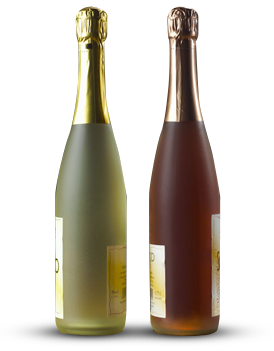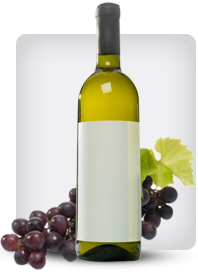

Tag: Early
Aging Potential of Premium Merlot: Beyond the Early Appeal
Posted onMerlot, often celebrated for its approachable, plush, and fruit-forward character in its youth, is frequently underestimated as a candidate for long-term cellaring. While mass-produced bottlings are crafted for immediate enjoyment, premium Merlot, sourced from esteemed terroirs and crafted with intention, possesses a remarkable capacity to evolve and complexify with age. Understanding the factors that contribute to its longevity reveals a wine of profound depth and sophistication, challenging its simplistic reputation.
The Foundation of Longevity: Structure and Balance
The ability of any wine to age gracefully hinges on its structural components: acidity, tannin, and alcohol. In premium Merlot, these elements exist in a harmonious balance that acts as a preservative, allowing the wine to develop slowly over time.
- Acidity: High-quality Merlot retains a vibrant acidity that provides freshness and prevents the wine from becoming flabby or tired as it matures.
- Tannins: While typically softer and more velvety than Cabernet Sauvignon, Merlot from great sites has a firm, finely-grained tannic structure. These tannins polymerize over time, softening and integrating into the wine, which contributes to a smoother mouthfeel.
- Fruit Concentration & Alcohol: A core of ripe, concentrated fruit and well-managed alcohol levels provide the material and body necessary to support extended aging without one element overpowering the others.
Terroir’s Crucial Role: Where Merlot Ages Best
Not all Merlot is created equal. The grape’s aging potential is profoundly influenced by its place of origin. The world’s most age-worthy Merlots hail from specific, often limestone and clay-rich, terroirs that naturally stress the vines, yielding lower yields and more concentrated berries.
- Pomerol & Saint-Émilion (Bordeaux, France): The benchmark for aged Merlot. Château Pétrus, while an extreme example, is predominantly Merlot and can evolve for half a century. Wines from estates like Le Pin, Vieux Château Certan, and Château Cheval Blanc (a Merlot-Cabernet Franc blend) demonstrate how Merlot develops incredible complexity of truffle, forest floor, cigar box, and dried cherries over 15-30 years.
- Tuscany, Italy: In regions like Bolgheri and within the “Super Tuscan” movement, Merlot is often blended or sometimes bottled alone. Wines like Masseto (100% Merlot) are legendary for their power and aging ability, developing notes of black plum, leather, and spice.
- Napa Valley & Washington State, USA: Top-tier producers in these regions focus on hillside vineyards and careful winemaking to produce structured Merlots. With time, these New World examples can develop nuances of cedar, cocoa, and stewed dark fruits, reaching their peak over 10-20 years.
The Evolution in the Bottle: A Flavor Journey
The transformation of a premium Merlot in the bottle is a study in aromatic and flavor development.
- Youth (1-5 years): The wine is dominated by primary fruit aromas—ripe plum, black cherry, raspberry, and often chocolate or mocha notes from oak influence. The tannins may be more perceptible.
- Maturity (5-15 years): The fruit becomes more subdued and savory. Secondary characteristics emerge, such as earth, leather, tobacco, and cedar. The texture becomes notably silkier.
- Full Maturity (15+ years): In the finest examples, tertiary notes take center stage. Think truffle, forest floor, dried figs, cigar ash, and graphite. The wine achieves a seamless harmony where no single component stands out, offering a profound and complex drinking experience.
Conclusion: An Investment in Complexity
To dismiss Merlot as a simple, early-drinking wine is to overlook one of the vinous world’s most versatile and rewarding grapes. Premium Merlot, with its robust structure and inherent balance, offers a compelling narrative of evolution. For the patient collector, cellaring these wines unlocks a dimension of flavor and elegance that their youthful versions only hint at, solidifying Merlot’s rightful place among the great age-worthy red varieties.
A White Wine Tasting Early Morning: Nuits-saint-georges
Posted onA Glass Of Wine Sampling Morning: Nuits-saint-georges
On an early morning’s tasting we satisfied a few of the ideal, as well as friendliest, winegrowers on the Côte de Nuits. After a check out to Vosne-Romanée we motored in the future to Nuits-Saint-Georges to met Fabienne Bony. With the luxury Land Wanderer’s open home windows our overview David mentioned the Romanée-Conti, La Tâche and Richebourg vineyards. Scenes from an oenological fairytale, the 2 Australian couples with us stared as David showed us just how a strip of premier cru creeping plants, Vosne Romanée Premier Cru Les Suchots and Beaumont, are bordered to the left as well as right by grand crus. There are 7 grands crus here, perhaps the greatest of the Côte d’Or: Romanée-Conti, La Tâche, La Romanée, Romanée-Saint-Vivant as well as Richebourg in Vosne-Romanée cover 64.7 acres; Grands-Echézeaux as well as Echézeaux are in Flagey-Echézeaux and also complete 115.8 acres. Grand crus make up a tiny 2% of all red wine created in Burgundy.
The small Fabienne stood beaming at us beside her huge tractor as we drove right into the backyard. Gallant lawyer as well as banking men in our group reported afterwards they felt like jumping bent on concern her aid. The big high-clearance vineyard tractor overlooked her like a hoping mantis. Yet Fabienne Bony can not make use of aid from our soft workplace hands. She functions the estate totally on her very own. Her husband is a permanent cattle as well as cereal farmer. Their one and three year-old children are taken care of by grandmother while Fabienne remains in the creeping plants or active in the white wine storage. She is of the brand-new generation of Burgundy cultivators that have actually done so much to enhance high quality and also have actually moved from mainly bulk red wine sales to bottles.
We collected around her on the side of a vineyard adjacent your home for a brief lesson on the particularities of Chardonnay and also Pinot Noir grapes. It’s not only the skin colours which differ. The shapes of the fallen leaves, the load per creeping plant, the vines’ practices in particular climatic problems– all vary enormously. The grape descriptions over, we curved our heads as well as submitted down the stairs right into the cellar. Fabienne syphoned a couple of centilitres from barrels, squirting dark ruby coloured tasting samples into each of our glasses as we progressed around the storage. We observed some decidedly significant modifications in red wines relying on the kind of oak made use of, some appeared sweeter than others, some had an extremely great smoky preference. She clarified just how her premier cru white wines are matured in 100% brand-new oak while the other white wines are matured in 2, three and also four year old barrels.
From the barrel to the bottle; the bottle sampling was held in the Bony family kitchen. Comfortably mounted around the dark oak cooking area table we were led with a puzzle of appellations, vintages and also individual stories. Fabienne talks rather great English so Lynne’s translation solutions were rarely called for. Sampling all the Nuits-Saint-Georges from parcels of creeping plants just a few metres from each various other however so different in flavour was a big learning experience. Lynne took us with some of the flavours as well as scents to be expected in young Pinot Noir white wines– raspberry fruit and also cassis berry. After a discussion of the barrel ageing process David described aromatic attributes in older red Burgundies. We tasted 3 various vintages of the single vineyard Nuit-Saint-Georges Les Damodes and also located a gamut of mushroom and also natural farmyard aromas! One of our brethren from down-under asked Fabienne which white wine she liked. ‘It all depends on the recipe which is accompanying the wine’ she smiled. On hint, we bid goodbye to the girl winegrower from Nuits-Saint-Georges and also head down to Le Morgan in Savigny-lès-Beaune for lunch.
A luring menu of typical Wine red cuisine with special signature dishes of the cook maintained us hovering prior to we might make a decision. Proprietor Jean-Pierre welcomed us, took our order, prepared the food and also offered it. And also he took care of the other two tables of lunching winegrowers with as much care as he did us.
An Aussie accent rang out, “Rought, how mach time do we ‘ave for a snooze prior to going on to number three?”
popular posts
-

Top-rated Napa Valley Cabernet Sauvignon 2025: A Vintage of Elegance and Power
11-13 2025The 2025 vintage in Napa Valley is already being heralded as one for the history books. A near-perfect growing season, marked by a mild Read More
-

Top-Rated Old-Vine Zinfandel 2025: A Vintage of Power and Poetry
11-10 2025The year 2025 has bestowed upon Zinfandel lovers a vintage to remember. While trends in the wine world come and go, the profound depth Read More

